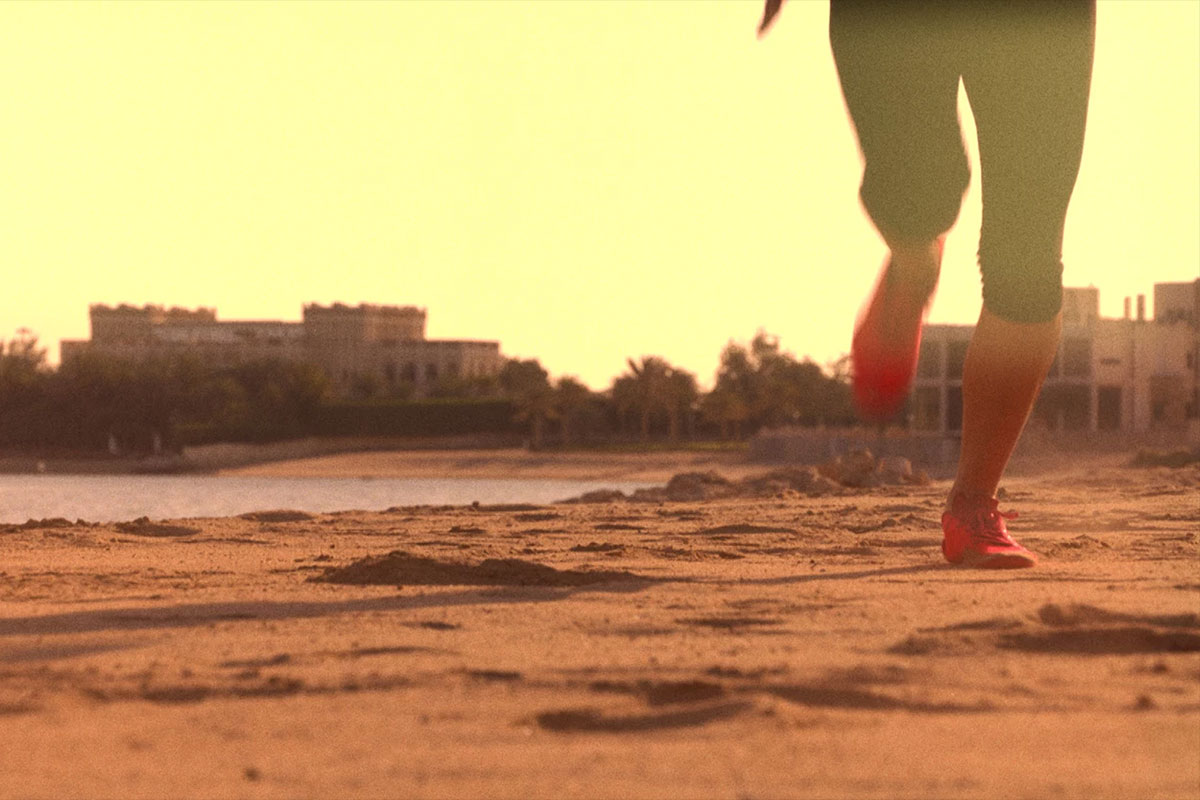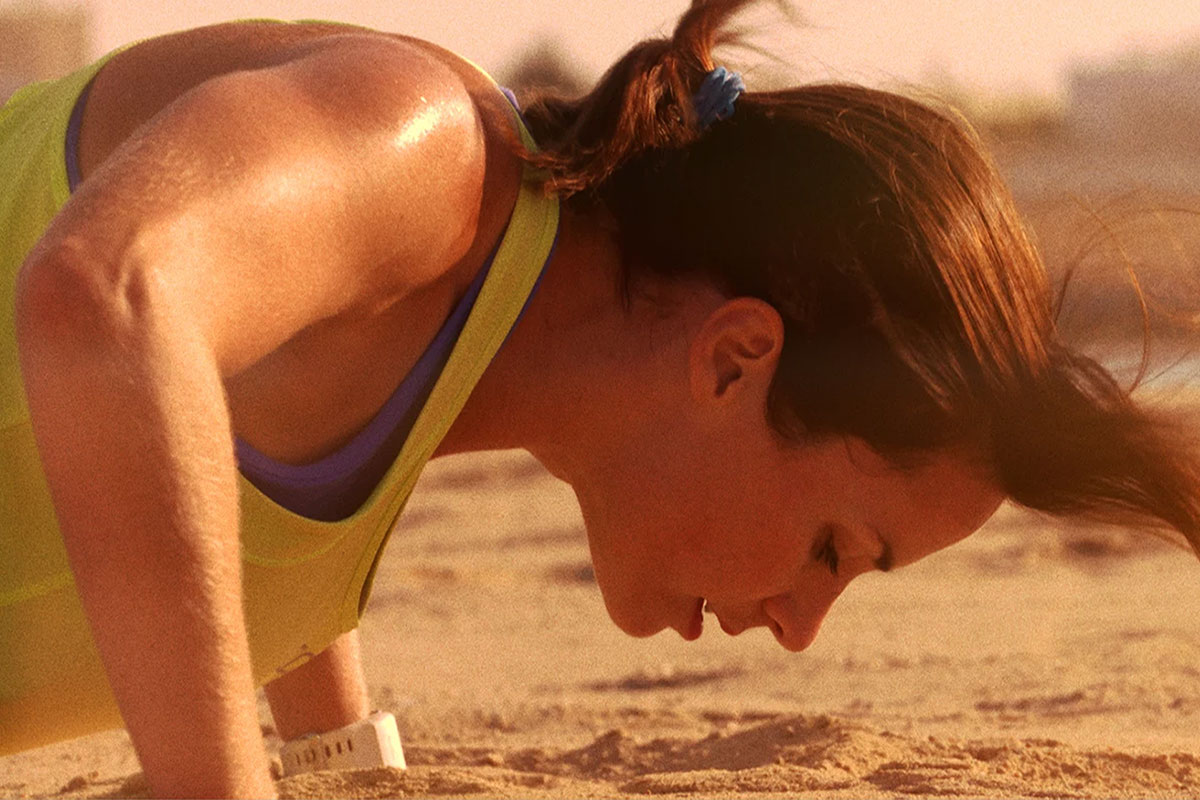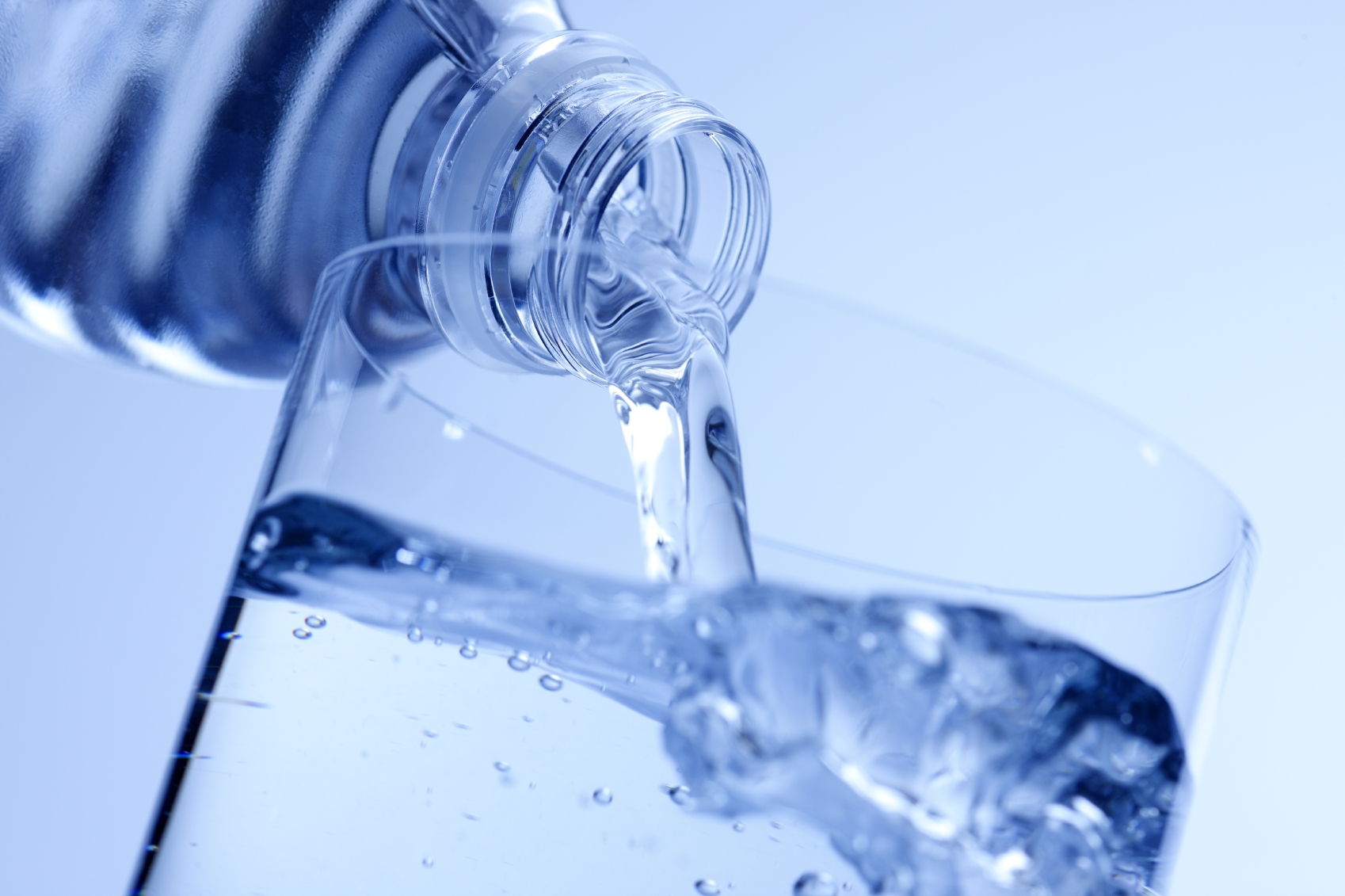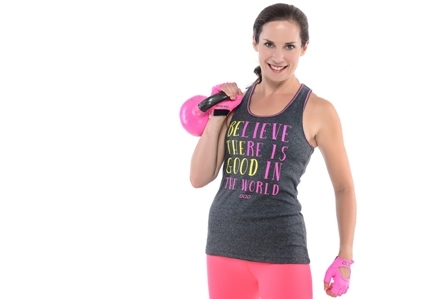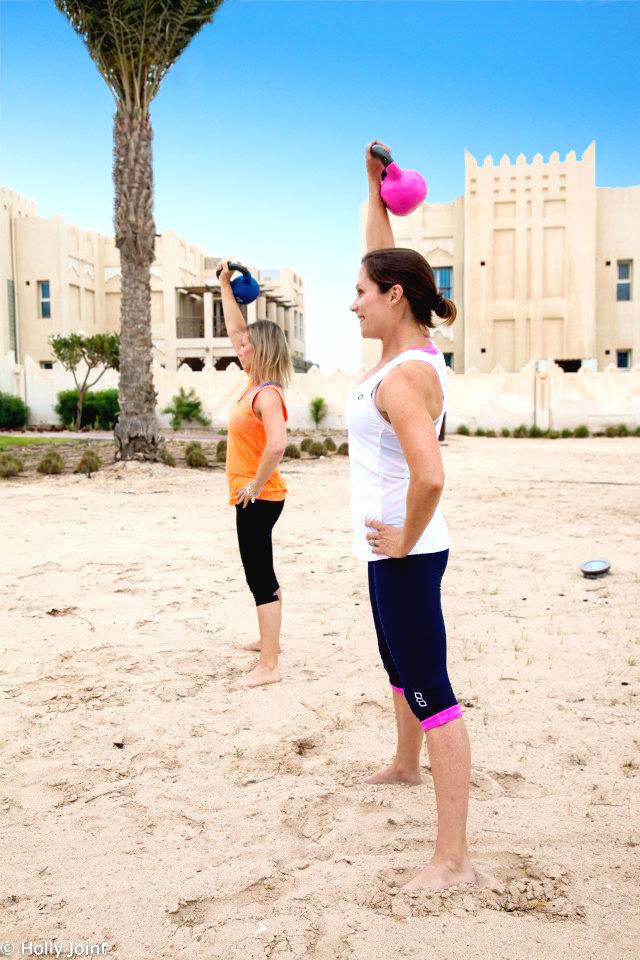Working out with your clients in the great outdoors is fun and healthy but, as summer temperatures rise, do we really want to transform our group training sessions into a ‘Bikram boot camp’? Fitness professional Ali Longmate explains how to train your clients safely outside this summer.
As a group X trainer and PT living in the Middle East for over eight years, where temperatures never stray far below 16°C and soar above 50°C, here are my practical tips to keep your clients cool and safe. Your clients will appreciate your thought and feel well looked-after, which will help your client retention going forwards.
- Firstly, and most importantly, ensure your clients are advised about proper and appropriate hydration (we’ll discuss this below).
- Carry sunscreen. I like to take a factor 50 sports aerosol that’s super quick and easy to apply and won’t sweat off.
- Prepare a spritzer spray of water with lavender oil to be applied to the back of the neck to cool down.
- Bring an ice bucket for a group training class for everyone’s water bottles and bring a couple of spare water bottles too.
- Seek shaded areas and have a plan B of where to work out in case your spot under those trees is already taken.
- Pre-plan so that, from the clients’ standpoint, they don’t have the sun in their eyes.
- Modify the time of your workouts to avoid the hottest parts of the day.
- Use your environment however you can. I have even taken classes with participants up to their ankles in the sea to keep cool. That was fun!
- Modify the workouts to take the cardio down and add more bodyweight resistance work. Aim for 60-70% of maximum heart rate and take more frequent breaks.
- Get your clients to dress the part. Dark colours absorb the heat. Keep it loose and light to allow more air to circulate over the skin. Remember, it’s not sweating but the evaporation of sweat that cools the body.
- Make your own sports drinks and send your clients the recipe. I like to dilute freshly squeezed orange juice with an equal amount of water, ice and a pinch of salt. That will hydrate and replace the electrolytes lost in sweat.
- Bring out segments of orange like we used to have at half-time on the hockey or football school fields. Avoid dry snacks like crackers or energy bars that can make you more thirsty and are often high in calories, which won’t help if your clients’ goals are weight-loss goals, regardless of the temperature!
- Be aware that there’s a link between humid conditions and poorer air quality, with pollution levels rising, so take the workout inside on these smoggy days.
- Know when to say, “We’re going inside.”
Cover yourself
It’s always important to get your clients to complete the PAR-Q and to keep this up to date. Don’t just get it done and file it way: add to your notes regularly, so as not to invite liability should something go wrong. As well as constantly monitoring your clients, ask them how they are feeling at the beginning and at regular stages during your workouts.
As the group trainer or PT, you will be exposed to the heat too, even if you are not taking part in the workout with your client, so be sure to apply these tips to yourself too.
Hydration
In normal conditions, our bodies are at a higher temperature than the environment we are in and, when that changes, we react by sweating. When that sweat evaporates, we cool down. This natural cooling system can fail if we’re exposed to soaring temperatures for too long. If the humidity is also high, sweat ‘sticks’ to your skin; it doesn’t evaporate as readily, which can send the body temperature even higher.
The body can regulate and cool itself through sweat as long as it is suitably hydrated. Once dehydration sets in, your body stores heat inside, which then raises your core temperature and can lead to heat exhaustion and heat stroke, serious conditions that can put the organs, central nervous system and life at risk.
Signs of dehydration and heat exhaustion include:
- light-headedness
- weakness
- dizziness
- paling of the skin
- headache
- muscle cramps
- nausea or vomiting.
Heat stroke
Even more seriously, a high temperature (you’re unlikely to carry a thermometer but we’re talking 103oF and above) is a clear sign of heat stroke. If your clients display any of the following signs, take action immediately. Heat stroke can be life threatening.
Look out for:
- a lack of sweat or an inability to sweat
- difficulty breathing
- warm, dry or moist skin
- strong and rapid pulse
- confusion and/or unconsciousness
- high body temperature (above 103oF)
- throbbing headaches
- nausea, vomiting or both.
What to do if your client displays the danger signs
So, you have pre-planned and exercised caution but, if one of your team starts to display the danger signs, then you must:
- get them to stop the workout immediately
- cool them down – and fast
- apply cool, wet cloths
- give them sips of water
- get them into the shade
- call 999 immediately if the person is still hot and incoherent.
Over hydration
Remember too that over hydration can be dangerous. Too much water can dilute the concentration of vital electrolytes in your blood – especially sodium, because sweat contains more sodium than any other electrolyte.
As much as 60% of the water lost in sweat can be water that is stored within the fat and carbohydrate molecules that are released from our bodies when these fuel stores are converted into energy. So replacing this fluid loss will dilute your blood.
Over hydration can, in extreme cases, lead to a potentially fatal condition called hyponatremia, where sodium levels in the blood become so diluted that your cells can literally become waterlogged, which can cause brain cells to swell.
Hyponatremia signs and symptoms include:
- nausea and vomiting
- headache
- confusion
- loss of energy and fatigue
- restlessness and irritability
- muscle weakness, spasms or cramps
- seizures.
How do I know if I’m drinking enough?
The now outdated view that we must completely prevent dehydration and replace every drop of sweat with a drop of liquid does sound logical at first but there are some serious problems with this theory. Recent studies, by Professor Tim Noakes for example, have shown that minimal levels of dehydration do not negatively impact on our body temperature, performance or health. Tim Noakes summarised, saying, “The answer is to drink as your thirst dictates.” So aim to keep thirst at bay and respond to thirst by drinking. Advise your clients to take a few sips every 10 minutes or so, or more frequently if they become thirsty.
A good way to know that you’re hydrating properly is by checking the colour of your urine. If it’s pale yellow (lemonade), you’re well hydrated. If it’s darker (like the colour of apple juice), drink more.
How hot is too hot?
There is no set temperature to say how hot is too hot or what level of humidity is too high – it is something you learn to instinctively gauge. So, as the instructor, use these top tips, observe, exercise caution and use your imagination to make your workouts fun, varied, effective and safe.
About the author
Ali Longmate is the founder of Ali Fit Club. She is a British ex-pat and has lived in the Middle East for over eight years. As a group fitness trainer, personal trainer, radio presenter, YouTube channel host and fitness writer, she is determined to change the way people think about exercise.
Visit Ali’s website: http://alifitclub.com/ and https://www.youtube.com/channel/UCx-yx57SJI0lEPXkWxGRpOw
Phone: +974 555 26407
Check out Ali’s video below for top tips to staying cool when working out in the heat.
You can also read Ali’s first blog for FitPro which features her personal story and a fantastic Kettlebell workout! Happy training!


